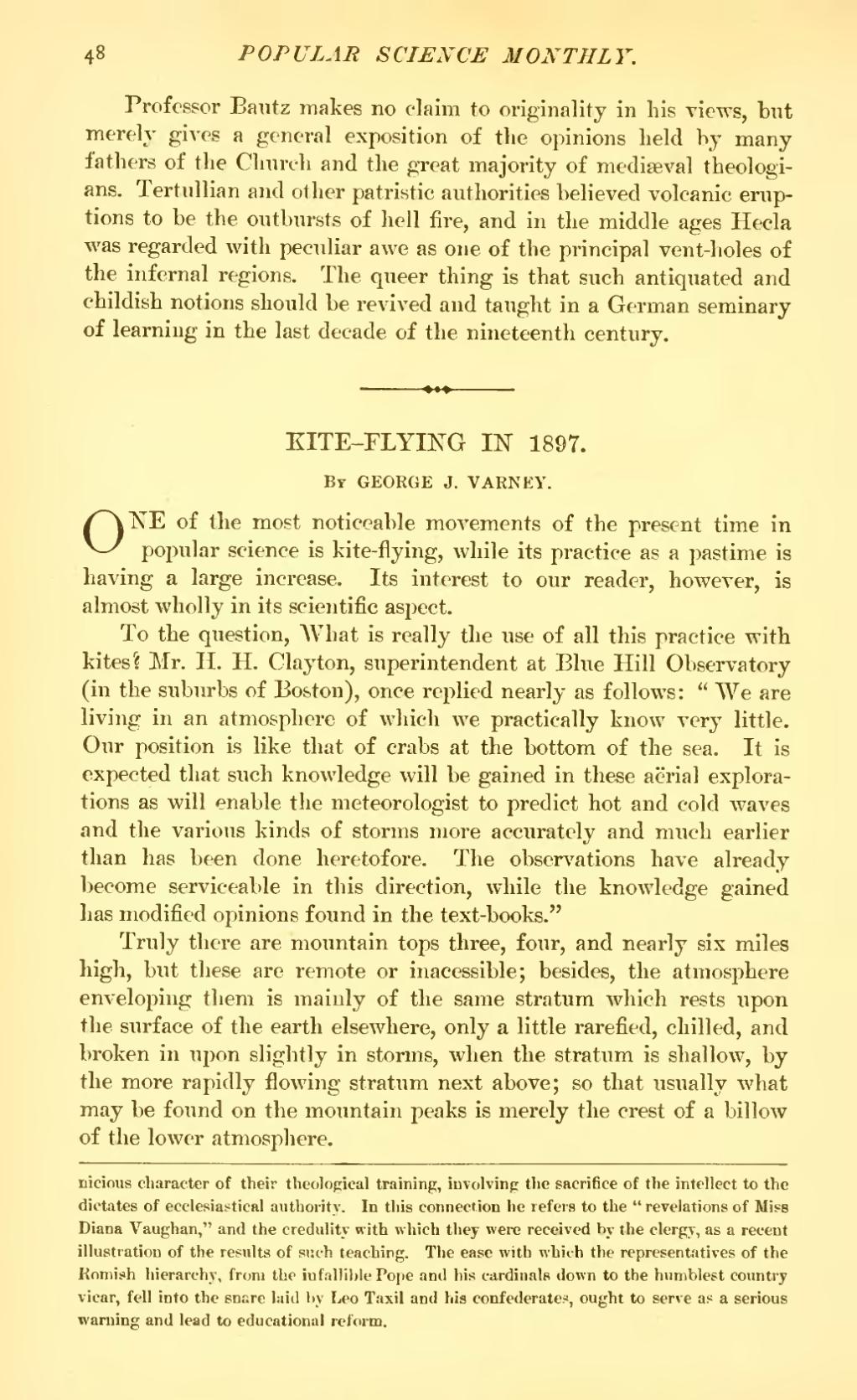Professor Bautz makes no claim to originality in his views, but merely gives a general exposition of the opinions held by many fathers of the Church and the great majority of mediæval theologians. Tertullian and other patristic authorities believed volcanic eruptions to be the outbursts of hell fire, and in the middle ages Hecla was regarded with peculiar awe as one of the principal vent-holes of the infernal regions. The queer thing is that such antiquated and childish notions should be revived and taught in a German seminary of learning in the last decade of the nineteenth century.
| KITE-FLYING IN 1897. |
By GEORGE J. VARNEY.
ONE of the most noticeable movements of the present time in popular science is kite-flying, while its practice as a pastime is having a large increase. Its interest to our reader, however, is almost wholly in its scientific aspect.
To the question, What is really the use of all this practice with kites '( Mr. H. H. Clayton, superintendent at Blue Hill Observatory (in the suburbs of Boston), once replied nearly as follows: "We are living in an atmosphere of which we practically know very little. Our position is like that of crabs at the bottom of the sea. It is expected that such knowledge will be gained in these aerial explorations as will enable the meteorologist to predict hot and cold waves and the various kinds of storms more accurately and much earlier than has been done heretofore. The observations have already become serviceable in this direction, while the knowledge gained has modified opinions found in the text-books."
Truly there are mountain tops three, four, and nearly six miles high, but these are remote or inacessible; besides, the atmosphere enveloping them is mainly of the same stratum which rests upon the surface of the earth elsewhere, only a little rarefied, chilled, and broken in upon slightly in storms, when the stratum is shallow, by the more rapidly flowing stratum next above; so that usually what may be found on the mountain peaks is merely the crest of a billow of the lower atmosphere.
| Reference was merged with the previous page's reference, where it belongs. — Ineuw talk 22:23, 27 July 2016 (UTC) |
